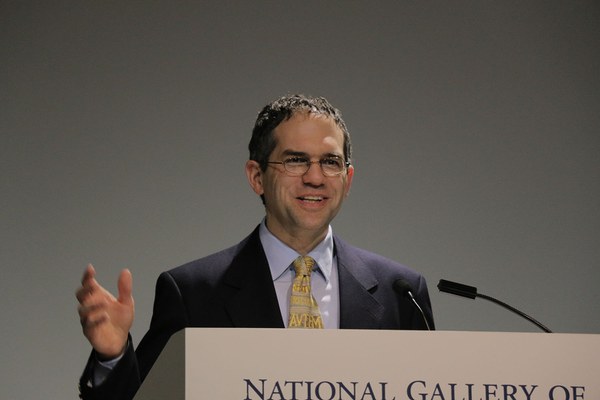Anthony Kaldellis, professor and chair of classics at The Ohio State University, was a spring 2020 visiting scholar in Byzantine Studies. He is writing a new history of Byzantium from the fourth to the fifteenth century, integrating new findings and models and posing large interpretive questions.
Q&A with Anthony Kaldellis
Why is it time to write a new history of Byzantium?
We don’t currently have an up-to-date, comprehensive, single-author history that cites the sources. It is a very long history: 1,123 years, and potentially you could even expand it earlier and later. What we have too much of in the field right now are brief histories of Byzantium, like 100–150 pages, that don’t cite the sources and sometimes tend to recycle consensus from a generation ago. Also many edited volumes written by different people, so the style is uneven. I am trying to write an accessible history that combines narrative and analysis, avoids technical language, and reflects current thinking on all kinds of issues, from economy and demography to religious and cultural history, and that cites the sources our knowledge comes from.
I have so far reached the mid-tenth century and, fortunately, I have already written a book on the history of the tenth and eleventh centuries. I hope my stay here at Dumbarton Oaks will help me with this project. Speaking to fellows here working on completely different topics—from Baukje van den Berg, who’s writing on the twelfth-century classical scholar Eustathios, to Jakub Kabala, writing on Byzantine papal contests in Moravia—I pick up things I never thought I would find.
What is one period for which the book presents an exciting new view?
There are many but I’ll just mention one: the seventh century. This is a convulsive period in Byzantine history that started with a long war against the Persian Empire. As soon as that was over, a generation later, we have the Islamic conquests. What looked like it might be a prolonged war ended up being a permanent state of affairs.
There has been a lot of new information about early Islam, especially from inscriptions and even early manuscripts of the Quran, and many reinterpretations. Do you call them Islamic conquests? Arab conquests? What was their nature? Their chronology? Looking back to the days when I was in grad school and how I understood that period, I now realize we were groping around in a fog, with confusion about some basic issues. In the book, I present a totally new narrative of the Persian occupation, which in some places lasted twenty years, and the Arab conquests, including new or previously overlooked sources.
What is an example of a new claim you make about the early Byzantine world?
I treat Roman law in a different way. Byzantine law and Roman law are the same thing—one is just a Greek version of the other. Historians often treat Roman law as a set of mandated punishments for specific crimes. The efficiency and efficacy of the law comes down to whether those punishments were actually enforced. We turn to other sources to determine that, but it’s difficult to get a picture of this: how do you know which laws are enforced, who they’re enforced on, and how?
I’ve come to a different understanding of the social function of Roman law. It was not a set of punishments. It wasn’t primarily about what happened in the courthouse when someone was accused of a crime. What Roman law provided instead was a social framework: it used a basic toolkit of tax exemptions, certain kinds of rights and privileges, and the opposite of tax exemptions, that is, liability for certain kinds of services to the state or supplementary taxes. The state defined all social classes based on combinations of those rights, responsibilities, and duties. They included the senatorial class, city councils, soldiers, bishops, priests, slaves, and farmers (both free and bound to their land).
The interesting thing when you look at narrative sources—nonlegal texts—is that you find the same social structure reflected in them as you find in the legal sources. Roman society was in fact structured according to this legal framework. This had nothing to do with punishments, which I think was a very small function of the law.
In Byzantine society we observe this law in motion. There are no social groups that lie outside this structure. An interesting case is monks. Originally, their whole thing was getting out of this legal and socioeconomic grid and living in the desert or a cave or whatever. But eventually they were regulated and subsumed. By the mid-fifth century, monks are just called a legal status, with their own rules, rights, tax exemptions, and liabilities for monasteries, and so forth. This was, I believe, a tight and coherent system. I find chains of accountability and responsiveness running up and down its hierarchies: it was not a system of arbitrary top-down power.
Julia Ostmann is postgraduate writing and reporting fellow at Dumbarton Oaks.

